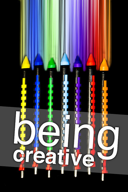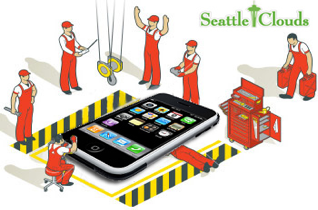Regardless of the studies you read, somewhere north of 90% of all internet users check email. Roughly the same percentage use search engines, so you can’t afford to ignore either. The thing is that there is a major difference between email and search engine optimization.
Search engine optimization is great for building awareness and acquiring new customers while email is best at retaining and upgrading existing customers.
Your marketing plans should include search, social, PPC, and other awareness building channels to get new sales and email sign ups, but once you have those sales and sign ups, optimizing your email campaigns can result in increased revenue per customer and in greater overall profitability. Just as an example, one email campaign that I helped to optimize just last year resulted in enough revenue to pay for an entire year’s worth of a full digital marketing program.
Know Your Audience

Sometimes, the only thing you’ll get with an email sign up is an email address. When this is the case, send a “Getting to Know You” email, where you offer something like a 10% discount for the person to fill out a survey in which you conveniently ask for more information like their location, gender, interests, and more. Alternatively, you can use a service like
Qwerly or
Rapleaf to get information on almost any email address. This information should be appended to your master database and used in your marketing.
By knowing more about your audience, you can send special offers only to those that haven’t bought in a while, use calls-to-action that appeal more to men or women or people in certain parts of the country, design different versions of your email to go to people that love sports or gaming or anything else. The more that you can increase the relevance of your email to the recipient, the greater chance you will have of them responding.
Provide Incentives

You need to provide your email newsletter subscribers something that they can’t otherwise obtain. There are many other businesses providing similar products and services such as yours, and you therefore have to give your subscribers a reason as to why they should sign up with you. Give good and relevant content, yes, but then?
Create an incentive by offering a sign-up bonus, weekly or monthly bonuses, discounts or bonuses on every purchase your subscribers make, giving them access to very relevant information about your business and affiliates, among other freebies. Reward your customers with a coupon if they like your posts on your social media pages, or enter them into a jackpot when they refer their friends to your website.
WARNING – Do not overuse incentives though. You don’t want to become like American car dealers that can’t sell anything unless it’s severely discounted, and you don’t want to be one of those services that always sends a 10% off coupon after I abandon my cart. Use incentives only to move you toward your goal and only when they are highly relevant to the recipient.
Promote

Social media pages for your business allow you to cross-promote. Promote your Twitter and Facebook pages in your email newsletters, and promote your email newsletters on your Twitter and Facebook pages. When you share content only within one channel, you give your constituents a reason to jump channels. For example, let’s say you’re a florist. If you share a video on how to keep flowers alive for longer within your email list and then you tweet that I can get that video if I sign up, there’s a good chance that I will sign up.
Conversely, you can put in your email newsletter that people that like your Facebook page sometimes get access to deals no one else sees. If I receive your emails, what do you think I’m going to do when you tell me that?
Use Creativity

No customer will read through a boring newsletter all the way to the end. Make your newsletter captivating, full of fun, and entertaining so that your customers can not only read through it all, but are also left eagerly awaiting your next newsletter. Your headlines have the ability to capture the attention of your readers, so keep them short, sweet, complete and specific.
However much you write unique and interesting content though, no one will read it if the headline is boring and flat. You can test the creativity of your newsletter by reading it and honestly gauging if you would read through it all if you were a customer. Another way to test subject lines, headlines, and other parts of your marketing is to use PPC to see which headlines get clicked on more, split test your email sends to see which subject lines get opened more, or even email a few of your subscribers and say, “If we wrote about X or Y, which would be more interesting to you?”
Implement a Mobile Version

Many people read their emails on their mobile devices, and you can benefit from this also. Organize your email newsletters into formats that can be easily read on both computer monitors and mobile devices. Avoid jam-packing too much information into each email newsletter that will affect navigation and readability. There are several free plug-ins and themes that can be used to format your newsletters to suit your mobile device customers. Make your e-newsletters mobile friendly and more subscribers are likely to read them.
When I design emails, I generally try to keep them to 480 pixels in width. This ensures that they fit easily on iPhones and most Android devices, and it’s typically not so narrow that it looks odd in Outlook, Hotmal, Gmail, and other email providers.












